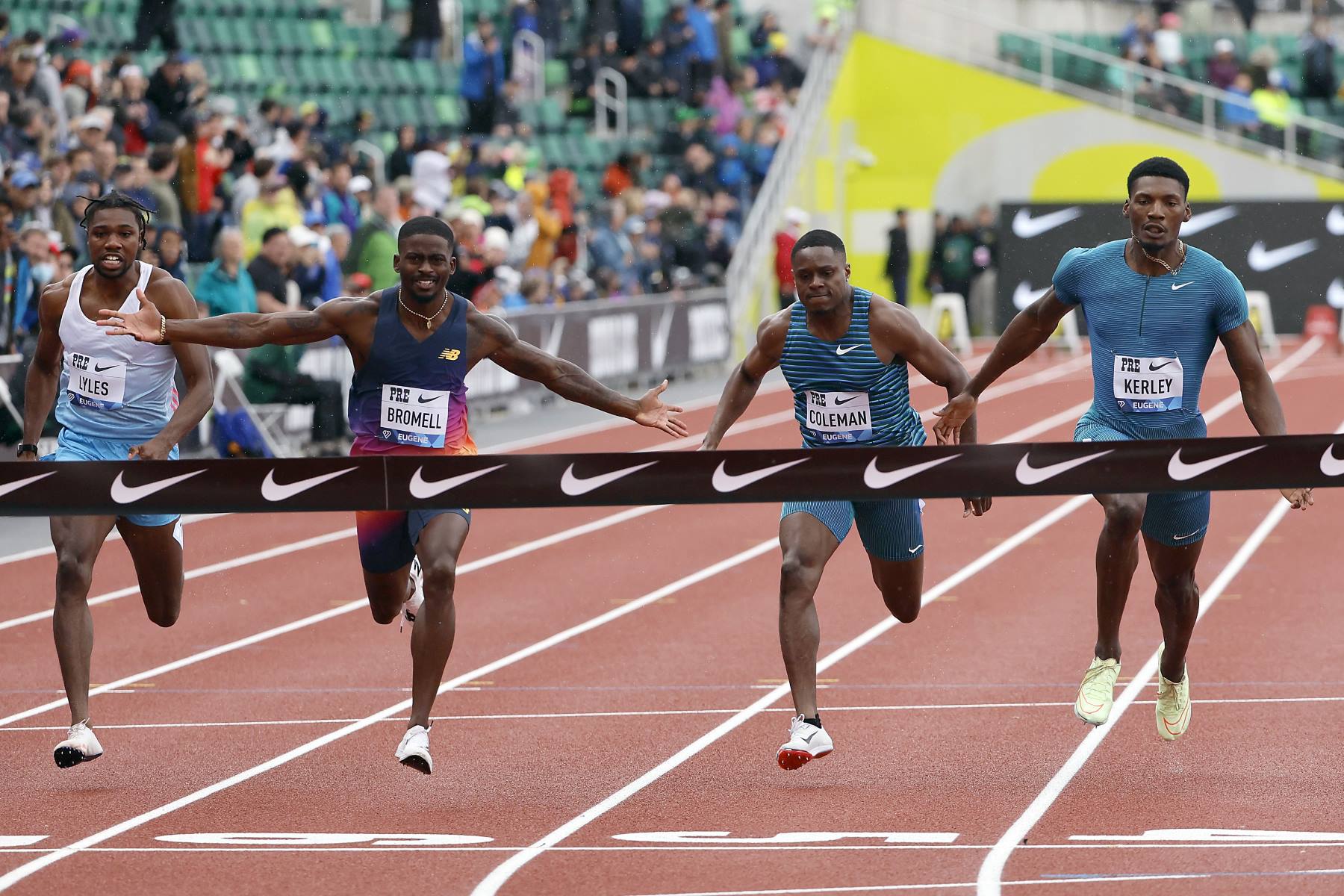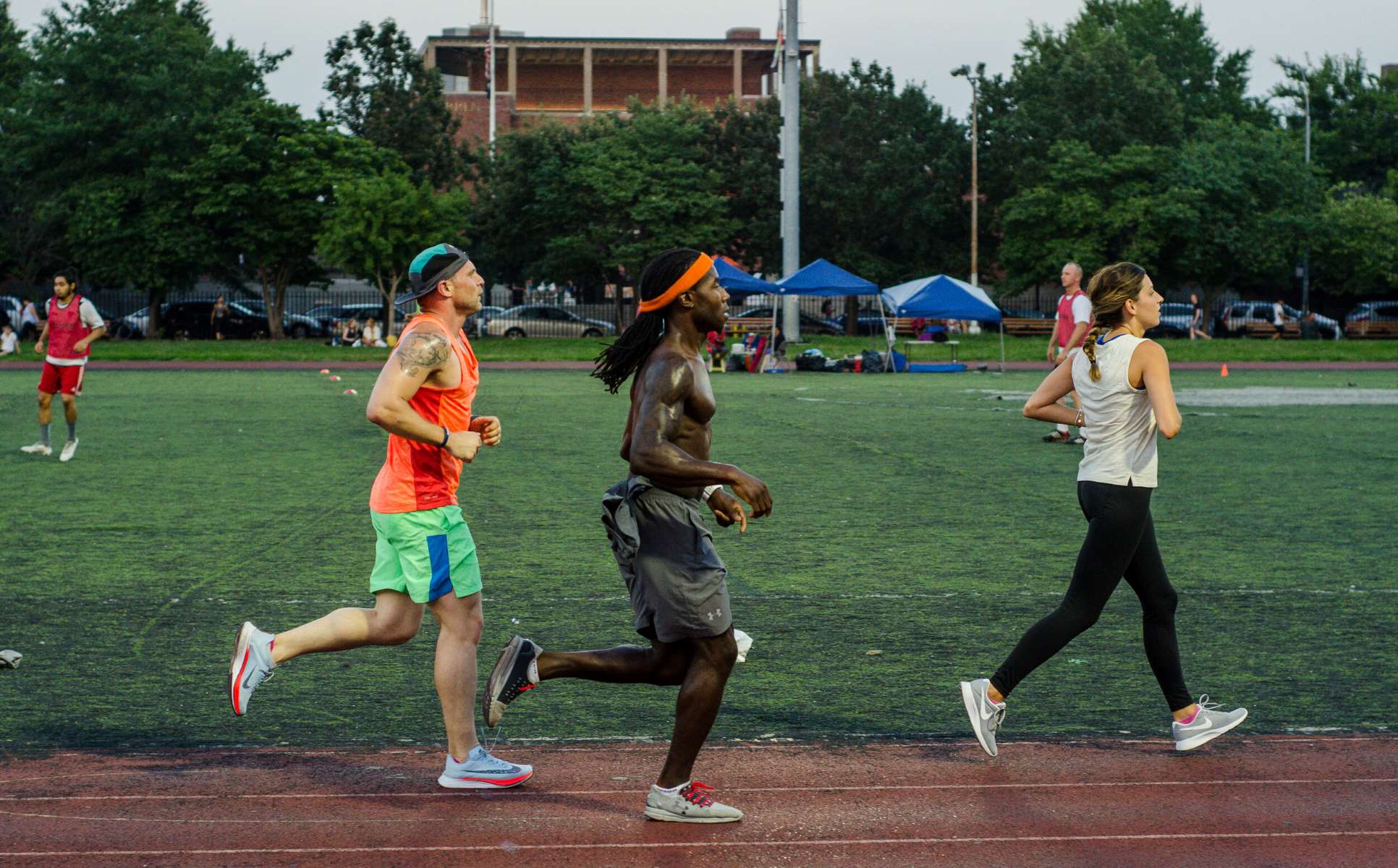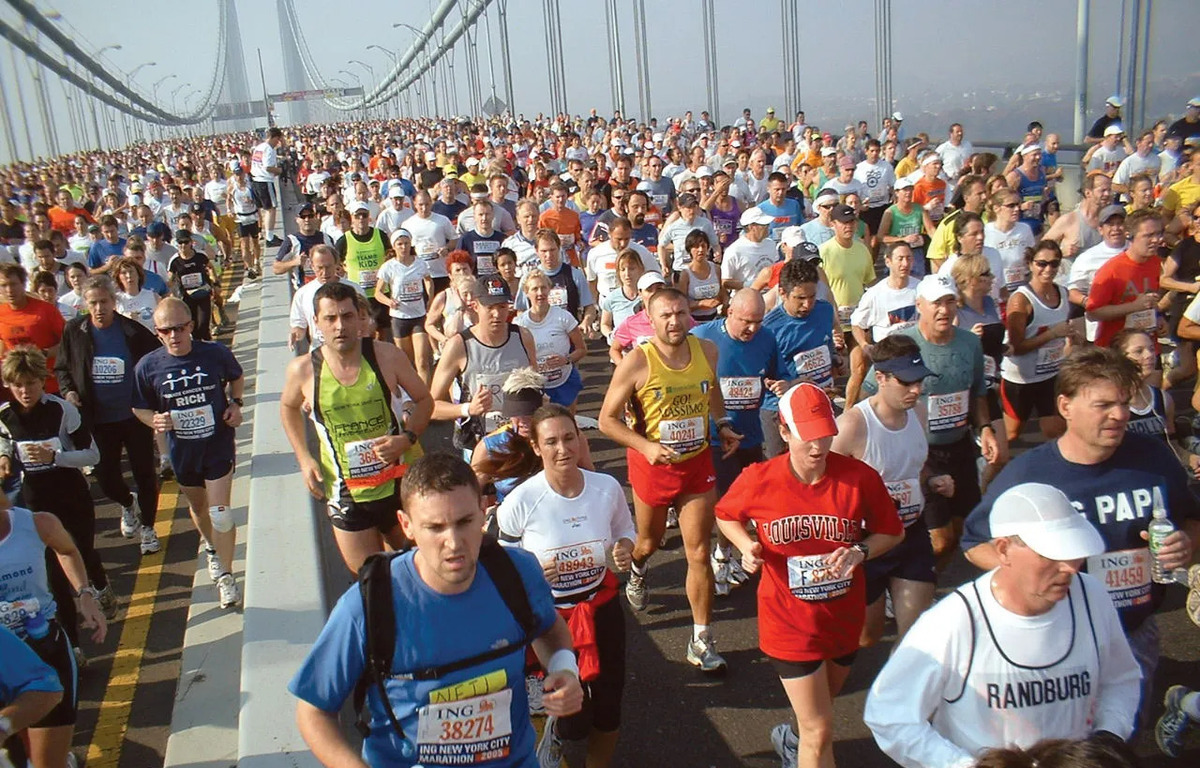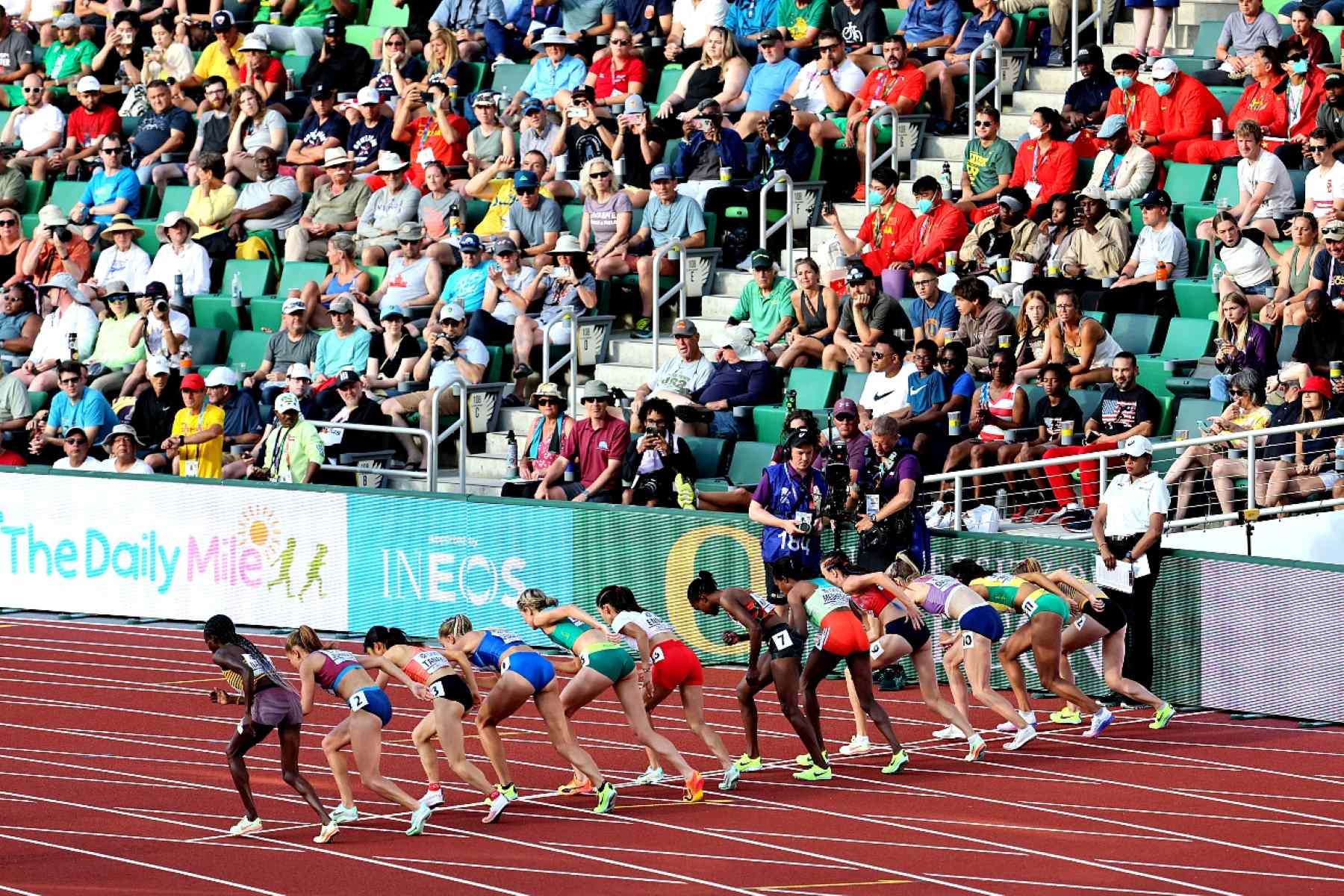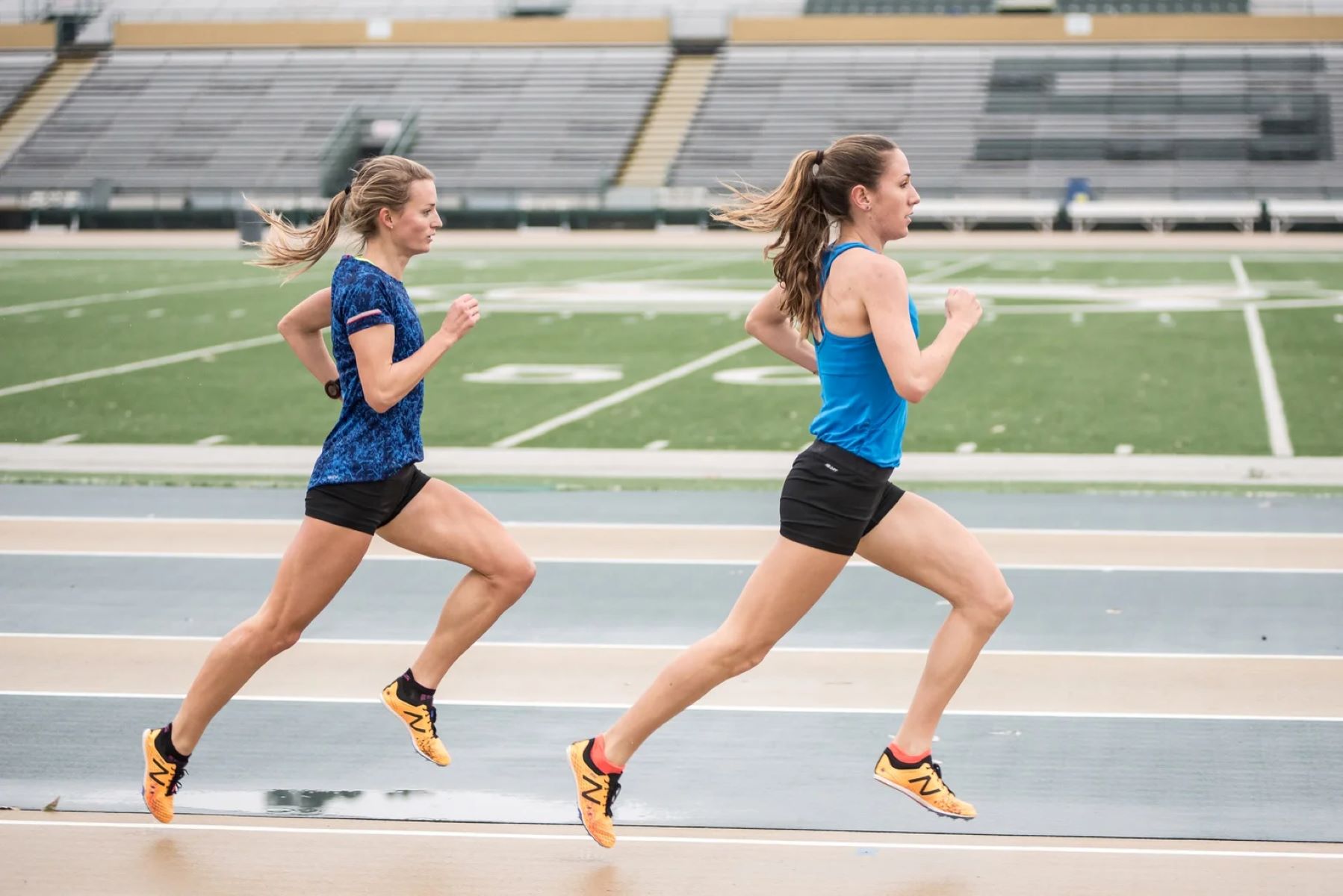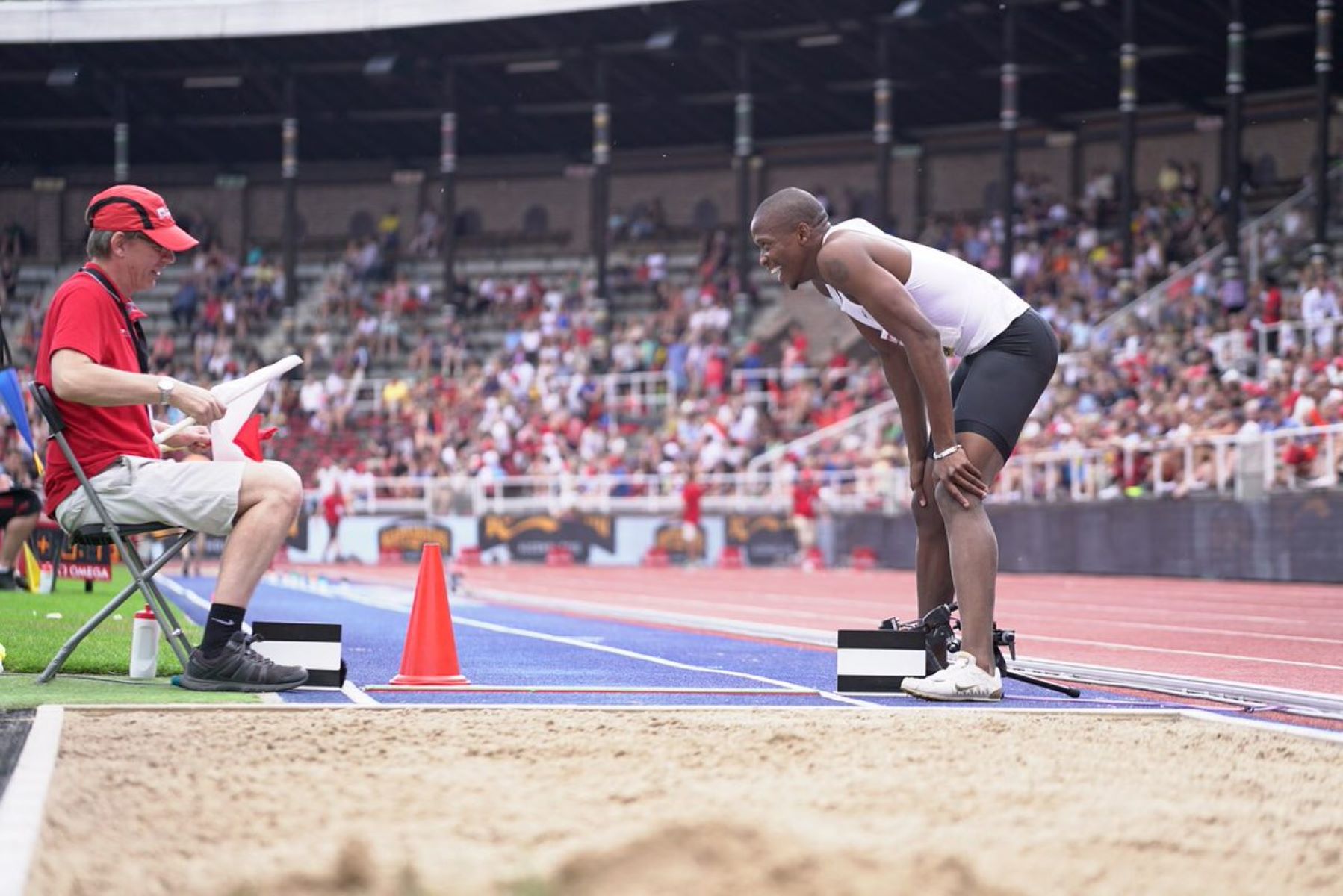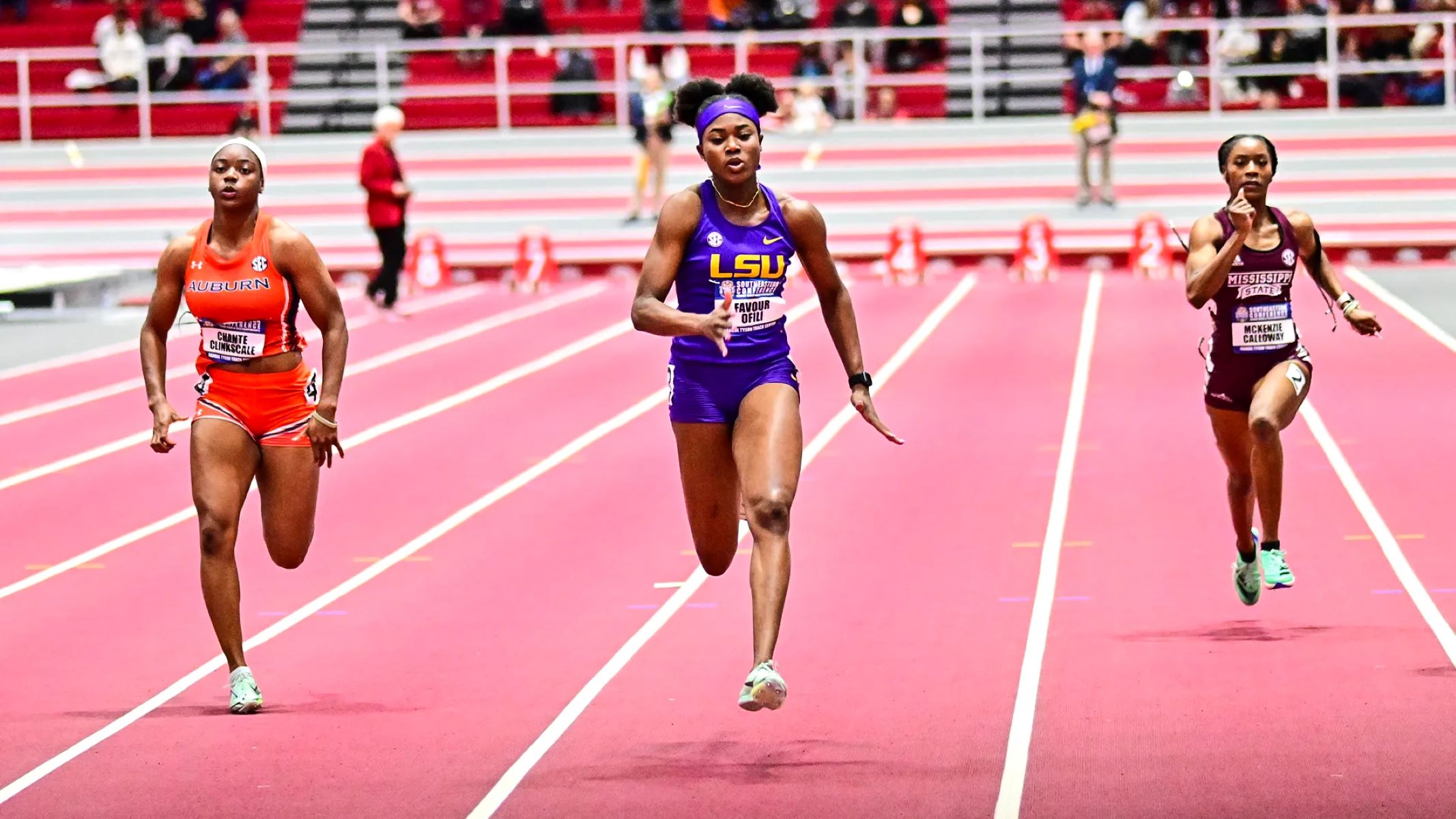Home>Misc>Featured>How Many Field Events Can An Athlete Partake In A Single Track And Field Meet
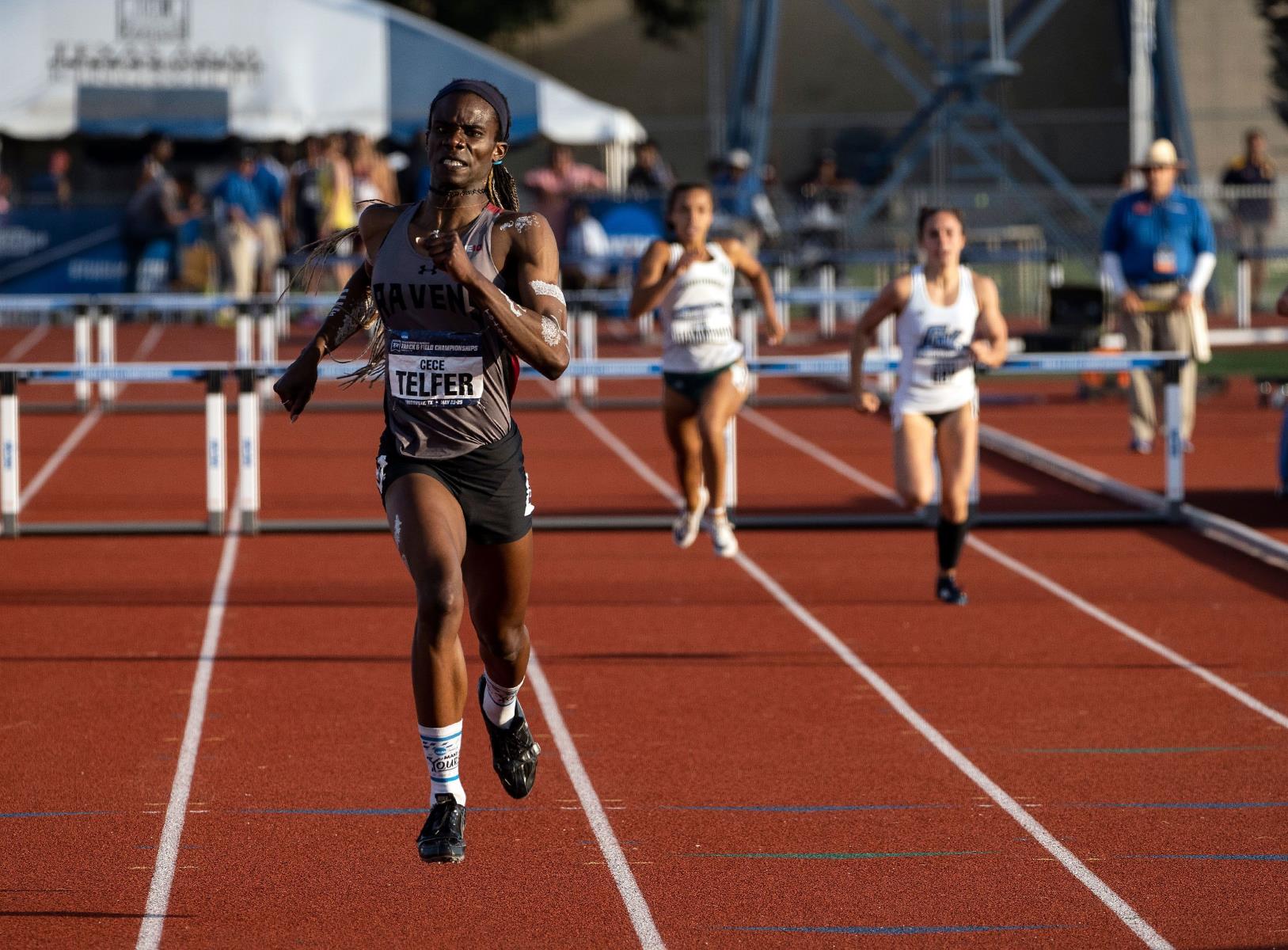

Featured
How Many Field Events Can An Athlete Partake In A Single Track And Field Meet
Modified: January 2, 2024
Discover the featured track and field events an athlete can participate in a single meet. Explore how many field events are available and make the most of your athletic abilities.
Introduction
Track and field is a popular athletic event that encompasses a wide range of disciplines, including both track and field events. While track events such as sprints and long-distance running often steal the spotlight, field events play an integral role in this sport. Field events involve various athletic disciplines, such as throwing, jumping, and vaulting, and showcase an athlete’s strength, power, and technique.
In a track and field meet, athletes have the opportunity to showcase their skills in multiple events, both on the track and in the field. However, when it comes to field events, athletes are often limited in terms of the number of events they can participate in during a single meet.
Understanding the rules and limitations surrounding the participation in field events can be crucial for athletes and coaches who want to optimize their performance and maximize their chances of success in a track and field meet. In this article, we will explore the number of field events an athlete can partake in during a single meet, the factors that can influence this number, and the strategies that can be employed to maximize participation in field events.
Whether you are an aspiring track and field athlete, a coach, or simply someone who appreciates the intense competition and athleticism of this sport, read on to gain valuable insights into the world of field events in track and field.
Field Events in Track and Field
Field events in track and field are a diverse set of athletic disciplines that test an athlete’s skill and ability in areas such as throwing, jumping, and vaulting. These events are designed to showcase different forms of athleticism and require a unique combination of strength, technique, and coordination.
Some of the most common field events in track and field include:
- Shot Put: In the shot put, athletes throw a heavy metal ball as far as possible. The distance achieved is a result of a combination of strength, speed, and technique.
- Discus Throw: The discus throw involves athletes spinning and releasing a discus, a heavy disk-shaped object, with the goal of achieving maximum distance.
- Hammer Throw: The hammer throw is a highly technical event that involves athletes swinging a heavy metal ball attached to a wire and releasing it to achieve distance.
- Javelin Throw: Athletes in the javelin throw aim to throw a long spear-like object called a javelin, using a running approach and a specific throwing technique.
- Long Jump: In the long jump, athletes run down a runway and jump as far as possible into a sandpit, measuring both their horizontal distance and technique.
- High Jump: The high jump requires athletes to clear a horizontal bar using a combination of speed, technique, and agility.
- Pole Vault: In pole vault, athletes use a long, flexible pole to clear a high bar, requiring a combination of speed, strength, and technical skill.
These field events not only test an athlete’s physical prowess but also demand mental focus and strategic planning. Each event requires a unique set of skills and techniques, which athletes must train and hone to excel in their respective disciplines.
Field events contribute to the overall spectacle of track and field meets, providing a captivating display of athletic ability and drawing in spectators from all walks of life. Whether it’s the explosive power of the shot put, the grace of the high jump, or the precision of the javelin throw, these events add depth and excitement to the sport.
Number of Field Events an Athlete Can Participate in
While track and field athletes have the opportunity to participate in multiple events in a single meet, when it comes to field events, there are usually limitations on the number of events an athlete can enter. The specific number of field events an athlete can participate in may vary depending on the meet regulations, the athlete’s age group, and the level of competition.
In general, athletes are often limited to participating in one field event at a time during a track and field meet. This is to ensure that each athlete has adequate time for warm-up, preparation, and rest between events, as field events typically require a significant amount of physical exertion and recovery time.
However, in certain situations, athletes may have the opportunity to compete in multiple field events within the same meet. This is more common in lower-level meets or events specifically designed for multi-event athletes. For example, in decathlon and heptathlon events, athletes compete in several track and field events over multiple days, including a combination of sprints, jumps, throws, and other disciplines.
It’s important to note that while athletes may have the chance to participate in multiple field events, it can be a demanding task that requires careful planning and management. Participating in multiple events not only takes a toll on an athlete’s physical stamina but also requires mental focus and adaptability to perform at their best in each event.
In addition, there may be restrictions on the order in which athletes participate in field events. For example, an athlete may be required to complete all their jumping events before moving on to throwing events or vice versa. This helps ensure a fair and organized competition and allows athletes to focus on specific event groups at a time.
Ultimately, the number of field events an athlete can participate in during a track and field meet depends on various factors, including the meet regulations, the athlete’s capability and specialization, and the specific event schedule. Coaches and athletes must carefully consider these factors to make informed decisions regarding event selection and participation.
Factors Affecting the Number of Field Events an Athlete Can Participate in
Several factors come into play when determining the number of field events an athlete can participate in during a track and field meet. These factors can vary depending on the specific meet regulations, the athlete’s age and ability level, and the overall structure and schedule of the event.
Here are some key factors that can influence the number of field events an athlete can partake in:
- Meet Regulations: Each track and field meet may have its own set of rules regarding event participation. Some meets may limit athletes to one or two field events to ensure a fair and organized competition. The meet organizers typically consider factors such as the number of events, available facilities, and time constraints when setting these regulations.
- Athlete’s Age and Ability Level: The age and ability level of the athlete can also affect the number of field events they can participate in. In youth competitions, there may be limitations to prevent excessive fatigue and risk of injury. As athletes progress in age and skill level, they may have the opportunity to participate in more events.
- Physical and Mental Stamina: Participating in field events requires a significant amount of physical and mental stamina. Jumping, throwing, and vaulting require explosive power, while maintaining focus and technique throughout the competition. Athletes and coaches must carefully assess an athlete’s endurance and readiness to compete in multiple events without compromising performance or increasing the risk of injury.
- Event Schedule: The event schedule can greatly impact the number of field events an athlete can participate in. If events are back-to-back or overlapping, it may be challenging for an athlete to adequately warm-up, recover, and perform at their best in multiple events.
- Specialization and Skill Set: Some athletes may specialize in specific field events based on their strengths and abilities. For example, a thrower may focus solely on shot put and discus throw, while a jumper may concentrate on long jump and high jump. Specialization can limit the number of events an athlete can participate in due to the need for focused training and preparation.
It’s crucial for athletes and coaches to carefully consider these factors when planning event participation. Finding the right balance between participation and performance is key to ensuring the athlete’s success and overall well-being.
Impact on Performance and Preparation
The number of field events an athlete participates in during a track and field meet can have a significant impact on their performance and preparation. Understanding and managing this impact is crucial for optimizing performance and achieving success in each event.
Here are some key ways in which the number of field events can affect an athlete’s performance and preparation:
- Fatigue and Recovery: Participating in multiple field events can lead to increased physical and mental fatigue. Each event requires a different set of physical skills and exertion, and the accumulation of fatigue can impact an athlete’s ability to perform at their best in subsequent events. Proper rest and recovery between events become essential to maintain optimum performance.
- Event Specificity: Each field event requires a specific skill set and technique. When an athlete participates in multiple events, they need to balance their training and preparation to address the unique demands of each event. This may require adjustments in training volume, intensity, and focus to ensure proper skill development and performance optimization.
- Mental Focus: Participating in multiple events requires a high level of mental focus and concentration. Switching between events and adapting to different challenges can be mentally taxing. Athletes must develop strategies to effectively switch their mindset from one event to another and maintain a sharp focus throughout the competition.
- Time Management: Participating in multiple events requires efficient time management. Athletes must allocate sufficient time for warm-up, rest, and event preparation, while also considering the timing of their events within the meet schedule. Proper time management helps athletes optimize their performance and minimize physical and mental stress.
- Adaptability: Participating in multiple events cultivates an athlete’s ability to adapt to varying conditions and challenges. Field events can be influenced by factors such as weather, equipment, and venue conditions. Athletes must quickly adjust their technique and strategy to perform well under different circumstances.
It is important for athletes and coaches to carefully assess the impact of participating in multiple field events on an individual basis. Factors such as training capacity, experience, and overall fitness level should be considered to determine the optimal number of events an athlete can handle without diminishing performance or risking injury.
By understanding the impact of participation in multiple events, athletes can develop appropriate training programs, effective recovery strategies, and mental preparation techniques to excel in their chosen field events.
Strategies for Maximizing Participation in Field Events
For athletes and coaches looking to maximize their participation in field events during a track and field meet, there are several strategies that can be employed to optimize performance and make the most of the opportunities available.
Here are some strategies to consider:
- Event Selection: Assess an athlete’s strengths, skills, and interests to determine which field events they are best suited for. Focus on events where they have the potential to excel and achieve the highest level of performance. This will help prioritize training efforts and enable the athlete to specialize and become proficient in those specific events.
- Training and Preparation: Devote sufficient time to the training and preparation of each field event. Develop targeted training programs that address the specific techniques, strength, and conditioning requirements of each event. This includes incorporating event-specific drills, practice sessions, and strength and agility training exercises. Proper preparation ensures that athletes are physically and mentally prepared to perform at their best in each event.
- Time Management: Manage time effectively during the meet to accommodate warm-up, rest, and recovery periods between events. Plan a schedule that allows for adequate rest while ensuring that the athlete has optimal time to warm-up and mentally prepare for each event. Proper time management helps prevent fatigue and promotes consistent performance throughout the meet.
- Mental Focus and Adaptability: Develop mental strategies to switch focus and adapt quickly between events. Practice maintaining a positive and focused mindset during transitions to ensure optimal performance. This may involve visualization techniques, pre-event routines, and mental rehearsal to help athletes mentally prepare for each event and enhance their ability to adapt to different challenges.
- Conservation of Energy: Develop energy conservation strategies during the meet to minimize fatigue and maintain stamina. This includes pacing oneself during events, optimizing recovery techniques between events, and managing physical and mental exertion throughout the meet. Adequate nutrition, hydration, and rest are essential to support energy conservation efforts.
- Communication and Support: Foster open communication and collaboration between athletes, coaches, and support staff. Ensure that everyone is aware of the event schedule, warm-up times, and any changes or adjustments to the plan. Coaches and support staff can provide guidance and encouragement to athletes, helping them stay motivated, focused, and confident throughout the meet.
By implementing these strategies, athletes can maximize their participation in field events, perform at their best, and make the most of their abilities and opportunities during a track and field meet.
Conclusion
Field events play a vital role in the world of track and field, showcasing the athleticism, strength, and skill of athletes in various disciplines. Understanding the factors that influence the number of field events an athlete can participate in is essential in optimizing performance and success in track and field meets.
While athletes are often limited in the number of field events they can partake in during a single meet, there are strategies that can be employed to maximize participation and make the most of the opportunities available.
By carefully selecting events based on an athlete’s strengths, skill set, and interest, coaches and athletes can focus their training efforts and develop targeted preparation programs to excel in those specific events. Effective time management, mental focus, energy conservation, and adaptability are crucial in maximizing performance and alleviating fatigue.
Communication and support from coaches and support staff play a substantial role in helping athletes stay organized, motivated, and focused throughout the meet. Open lines of communication ensure everyone is aware of the event schedule and any changes that may arise.
Ultimately, participating in field events requires a balance of physical training, mental preparation, and strategic planning. By considering the unique demands of each event, athletes can optimize their performance and make the most of their abilities and opportunities in track and field meets.
Whether you’re a dedicated track and field athlete, a coach, or simply a fan of the sport, understanding the intricacies of field events and the strategies behind maximizing participation enhances appreciation for the dedication and skill required to excel in this exciting athletic discipline.
